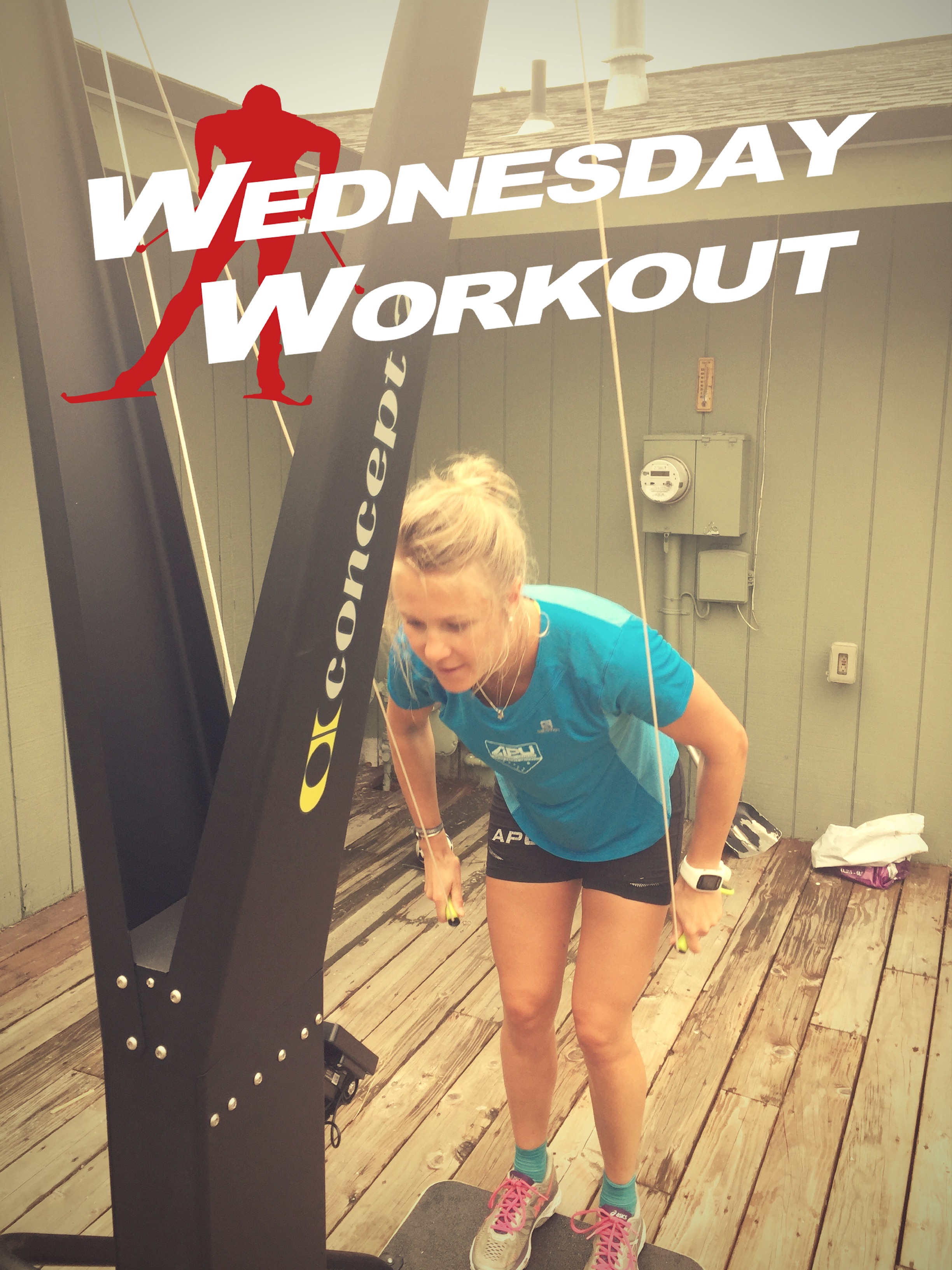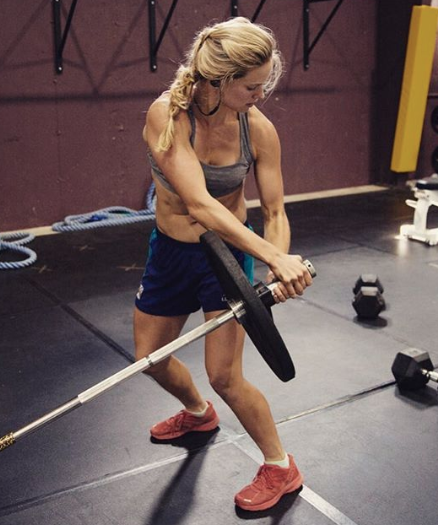
If you have a lower-body injury, be it acute or chronic, training for cross-country skiing can be frustrating: there are so many activities which must be cut back if you are trying to protect a knee, ankle, or foot.
Luckily, there are good training options available, especially if you have access to a double-pole machine like an Ercolina or a Concept2 SkiErg.
“I use the SkiErg a lot because I fight with feet injuries, and it is a safe escape from ski boots or shoes,” U.S. Ski Team and APU skier Sadie Bjornsen wrote in an email.
Last season, Bjornsen won World Championships bronze in the team sprint with Jessie Diggins. This season, she is back to battling heel spurs. That’s why she has been putting in time on the SkiErg she has at her house, but she sees other benefits to these types of workouts as well.

“The SkiErg can also be really helpful on rainy days, super cold days in the winter, or just days that you want to rock out to some tunes indoors and avoid traffic on the roads,” Bjornsen explained. “It is an easy workout to get the most ‘bang for your buck’ if you have a short amount of time, which I also really like. There is no wasted time tucking on downhills, or coasting across the flats. Instead, you are on power mode from the start to the finish.”
And as numerous research studies have recently shown, double-poling ability and upper-body strength are more and more becoming great predictors of overall ski performance, even in freestyle races.
“I like to do a little intensity in my SkiErg workouts because it helps keep it fun and fresh, and I also think it really helps to build my upper body strength,” Bjornsen wrote. “Our sport has become really upper-body driven, so I feel like I can never get too much upper-body workouts!”
With that in mind, she shared a recent interval workout she did on the SkiErg — it’s bread and butter for Bjornsen. “I like to try to do this workout at least once a week all through the summer, and sometimes more if I am going through a period of struggle with my heel spurs,” she wrote.
It aims for an hour of total workout time.
The Start: “I start my workout with a fifteen-minute warm up. During this time, I often shut my eyes, and visualize skiing. This helps bring in true ski form, and feel my movements, rather than just fall into a ‘SkiErg-specific technique.'”
Getting Speedy: “During this time, I will do some little ten-second increases in power to warm up my back and arms, and get ready to go hard.”
The Workout: “After fifteen minutes, I begin the workout known as 30-30’s. This means 30 seconds of intervals followed by 30 seconds of recovery, then repeat for 30 minutes. What may feel easy at first, quickly catches up after 10 minutes, so I always start this workout more conservative than feels appropriate.”
Keeping It Going: “After about five minutes of 30 seconds on, 30 seconds off, I start to see a common number of watts I am exerting during the 30 seconds. This is where I set a goal. Maybe it’s 190 watts I am hitting, I want to continue to reach that level or more for the next 25 minutes of this workout. This becomes increasingly hard around 20 minutes, and requires a certain amount of mental power. The 30 seconds of rest begins to pass too quickly, and I find myself becoming really focused in my own little world… forgetting where I am (maybe a garage, maybe a gym).”
Finishing Up: “By the end of 30 minutes of 30-30’s, I am pretty worked, and feel like I have just done a race out on the snow. This is when I bring myself back to my surroundings, and finish with a fifteen minute easy warm down to help flush my arms out.”
Final Thoughts: “Not only does this one hour pass really fast, but it is a really focused workout that feels like it truly helps build specific power. I always make sure I finish this workout with a little five minute walk. This helps flush all my muscles, but also helps make sure my back goes back to moving naturally after a pretty intense workout.”



